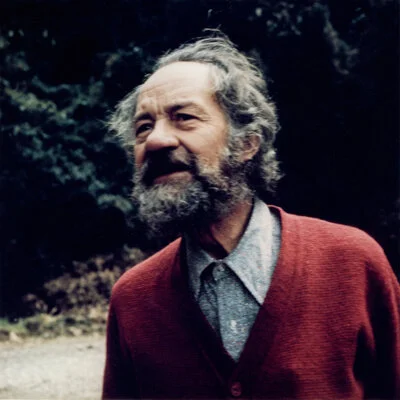Mural de Piedra en la Universidad Central (1948–1954)
Ubicado detrás del Teatro Universitario de la UCE, este colosal mural de nueve metros explica “la historia de la humanidad” y destaca por su escala monumentaria.
Mural para el diario El Comercio (1957)
Una obra en madera y metal realizada para el vestíbulo del periódico, que resalta la experimentación técnica del artista.
Murales de la Caja del Seguro / IESS (1959–1960)
Realizados en mosaico, piedra y metal, representan la identidad laboral ecuatoriana tanto en el edificio del IESS como en la terminal del aeropuerto de Quito.
Murales en el Banco Central y Avalúos y Catastros
El primero destaca por su mosaico de piedra y motivos naturales. El segundo aborda temas urbanos en estructuras públicas con mosaicos modernos.
Monumento a la Madre (Ambato, 1964)
Escultura en piedra rosada emplazada en Ambato, conmemorativa y simbólica del rol materno.
Fuente de la Villa Flora (1969)
Una obra escultórica funcional en el espacio público quiteño, resaltando el estilo expresionista del escultor.
Murales en múltiples lugares icónicos de Quito
Incluyen piezas en el IESS, la Universidad Central, el aeropuerto de Quito, el Banco de Préstamos, el Banco Central, el Hotel Colón y el diario El Comercio.
“La Virgen y Niño” (1958)
Escultura religiosa realizada para la Abadía de Gethsemani en Kentucky, EE.UU.
“Danzantes” en madera (1948) y piedra azul (1949)
Serie que muestra figuras humanas en movimiento, destacada por su expresividad y uso de materiales nobles.
“Llacta Mama” (1940)
Retrato escultórico en madera de nogal galardonado en el Salón Mariano Aguilera, con gran impacto nacional.
“Flight” (1979)
Obra abstracta que sugiere movimiento comparando aviones y aves, ejemplar de su etapa final.
“Sculpture of the Western Hemisphere” (1941)
Obra reconocida internacionalmente, premiada en Nueva York, simboliza visión global y continuidad cultural.
“Hug” (1968) y “Couple” (1969)
Obras intimistas, en abstracción y expresionismo, que representaron emociones universales.

Mira la historia detrás de estas bellas artes que tiene esta obra actual de Quito.